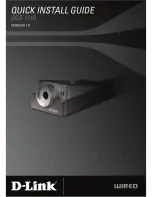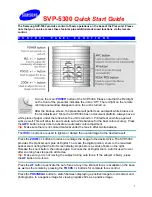
The shutter, in controlling the lenght of time for which the light strikes the film, will inevitably record any movement during that time
as a slight or grater blur.
So you are left with three things to think of:
How fast is the action you want to catch?
How much of the scene in front I the lens has to be sharp?
Is the light good enough for either?
If there is fast action, you have to choose and pre-set an appropriately fast shutter speed (page 49) and then pair it with the stop
which is right by your meter.
If the scene is to be sharp from a point close to the lens to some other point well away from it, you should choose the stop that will
yield the necessary depth of field (page 48) and then pair it with the shutter speed agreed by your meter for correct exposure.
If the light is very poor, the chances are that you may not be able to cope with either extremely fast or particularly deep subjects.
Yet your choice in putting shutter speed or depth of field first should still be governed by what you value most about the picture you
propose to take.
Exposure nowadays is no problem at all. You can arrive at the right exposure by guessing it, or measuring it. But to hit it off in such a
way that it will produce the picture you want is still a matter of intelligent judgment.
EXPOSURE VALUES
The exposure value system works by assigning a single setting, one of a
series of plain numbers, to the exposure. A low exposure value corresponds
to a great exposure, higher exposure values corresponds to decreased
exposures. Thus if an exposure value of 12 yields a correctly exposed
negative, setting of 10 or 11 yield over-exposed negatives, settings of 13 or
14 under-exposed ones. Every exposure value setting yields double the
exposure (twice as much light reaching the film) of the next higher value,
and half the exposure obtained with the next lower value. Intermediate
settings are also possible.
On Hasselblad lenses with exposure value scale the exposure values are
marked and set on the shutter rim.
Any given exposure value corresponds to a seris of aperture and shutter
speed combinations, each combination yielding the same exposure. Thus an
exposure value of 12 would cover settings of½50 second at f4, 1/125 second
at f5.6, 1/60 second at f8, and so on. The aperture and speed controls of the
exposure value shutter are cross-coupled so that setting a slower shutter
speed at the same time stops down the lens accordingly, and setting a large
aperture in turn adjusts the shutter speed to keep the exposure constant.
www.mr-alvandi.com
Summary of Contents for 1000 F
Page 18: ...WILD LIFE www mr alvandi com ...
Page 52: ...THE CUT FILM ADAPTOR www mr alvandi com ...
Page 54: ...Daylight Exposure Values www mr alvandi com ...
Page 55: ...Filters for Black and White Film www mr alvandi com ...
Page 59: ...Close Ranges with 50 60 mm Distagon and Planar 80 mm www mr alvandi com ...
Page 60: ...Close Ranges with 120mm S PLANAR 150 200 mm SONNAR www mr alvandi com ...
Page 62: ...Conversion of Film Speed Systems Colour Films www mr alvandi com ...
Page 63: ...Black and White Films www mr alvandi com ...
Page 64: ...www mr alvandi com ...
















































